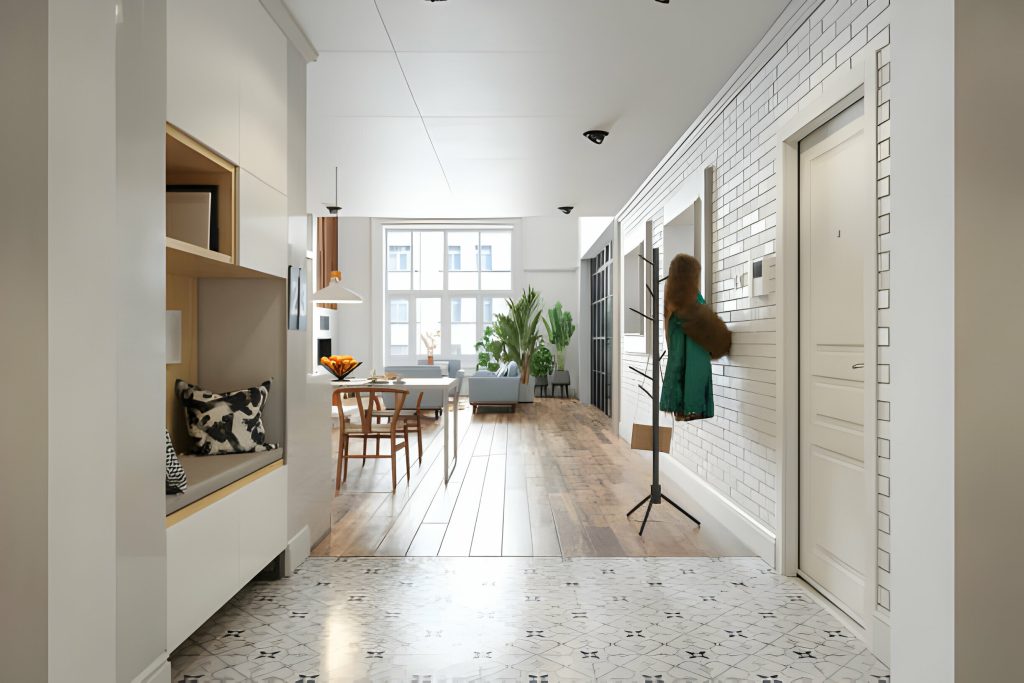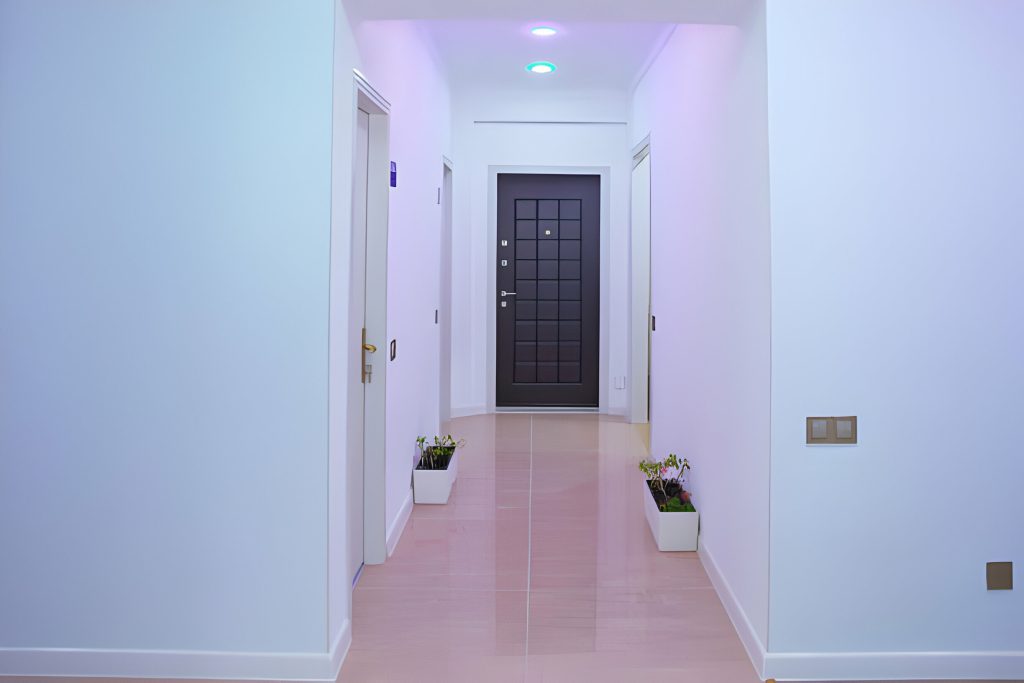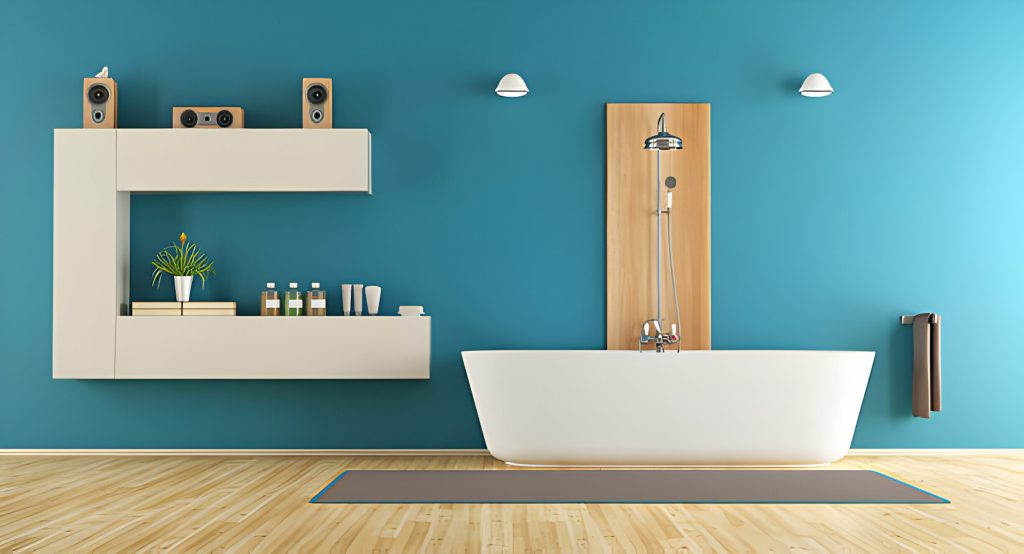Choosing the right paint for bathrooms is crucial, but with so many options available, it can be overwhelming. Don’t worry, we’ve got you covered! In this article, we’ll explore which paint is best for bathrooms based on durability, moisture resistance, and ease of cleaning. Say goodbye to those bathroom paint woes and hello to a beautiful and long-lasting finish!
Factors to Consider When Choosing Bathroom Paint
When choosing bathroom paint, you should consider factors such as mildew-inhibiting properties, washable finishes for easy cleaning, and paints with a tight structure that perform well in high-moisture environments. These factors are important because bathrooms are prone to moisture and humidity, which can lead to the growth of mold and mildew. By selecting a paint with mildew-inhibiting properties, you can prevent these issues and protect your walls. Additionally, choosing a paint with a washable finish will make it easier to clean any dirt or stains that may accumulate in the bathroom. Finally, opting for paints with a tight structure will ensure durability and moisture resistance in this high-humidity environment. Overall, considering these factors when selecting bathroom paint will help you maintain a beautiful and long-lasting finish in your bathroom.
Best Bathroom Primers
For optimal results, you should consider using a primer specifically designed for bathrooms. Choosing the right primer is crucial to ensure that your bathroom paint job lasts and doesn’t peel or bubble due to the high humidity levels in bathrooms. Some of the best brands for bathroom primers include KILZ Mold & Mildew Interior/Exterior Primer, Zinsser Peel Stop White Triple Thick High Build Binding Primer, and BEHR White Acrylic Interior Kitchen, Bath, and Trim Stain-Blocking Primer and Sealer. Using a compatible primer can help prevent peeling in bathroom paint by creating a strong bond between the surface and the paint. Additionally, using semi-gloss paint in bathrooms has its benefits as it is moisture-resistant, durable, quick-drying, and easy to clean. When selecting glossy paint for bathroom walls, be sure to choose one that is specifically formulated for high-moisture environments like BEHR Premium Plus Hi-Gloss Enamel Interior/Exterior Paint.
Recommended Paints for Bathrooms (Matte, Flat, Eggshell
To achieve the best results in your bathroom, you should consider using matte, flat, or eggshell paints that are specifically made for high-moisture environments. Matte paint offers several benefits for bathrooms, including its ability to hide imperfections and provide a smooth finish. Before painting, it’s important to properly prepare surfaces by cleaning them thoroughly and repairing any damage. When selecting a color for your bathroom paint, consider lighter shades to optimize brightness and reflectivity in the space. Avoid common mistakes such as using exterior paints or neglecting primer application. Additionally, eco-friendly paint options are available for bathroom renovations, offering low VOC levels and sustainable materials. By following these tips and avoiding common pitfalls, you can create a beautiful and durable paint job in your bathroom.
Pros and Cons of Semi-Gloss Paint
If you want a paint finish that is durable, mildew-resistant, and easy to clean, consider using semi-gloss paint in your bathroom. Semi-gloss paint offers several advantages for bathroom walls and trim. It provides a high level of moisture resistance, making it ideal for areas prone to humidity and splashes. The glossy finish creates a hard coat that is less likely to peel or bubble when exposed to moisture. Additionally, semi-gloss paint dries quickly and can be easily cleaned with soap and water. However, it’s important to note that semi-gloss paint may show texture and imperfections on the surface. If you prefer an alternative, there are other moisture-resistant paint options available such as gloss or high-gloss finishes.
Glossy and Full-Gloss Paints for Bathrooms
Glossy finishes offer the most moisture protection in bathroom paint. The reflective surfaces of these finishes create a barrier that repels water and prevents moisture from seeping into the walls. This makes glossy paint a great choice for bathrooms, where humidity levels are high and moisture is present. In addition to their moisture resistance, glossy paints are also easier to clean. Their smooth surface allows for effortless wiping down, making it convenient to remove any dirt or grime that may accumulate in the bathroom. Furthermore, glossy paints are known for their durability and longevity. They can withstand frequent cleaning without losing their shine or color. Not only do they provide excellent functionality, but they also contribute to the aesthetics and style of the bathroom with their sleek and shiny appearance.
Understanding Bathroom Paint
Now that you have learned about glossy and full-gloss paints for bathrooms, let’s dive into understanding bathroom paint in general. When it comes to choosing the best paint for your bathroom, there are a few factors to consider. First, think about the different types of paint available, such as matte, flat, eggshell, semi-gloss, and high-gloss. Each type has its pros and cons when it comes to moisture resistance and durability. Additionally, you should consider the color scheme of your bathroom and how it will complement the overall design. It is also important to look for waterproof paints with mold and mildew resistance properties to protect your walls from damage. Some popular paint brands known for their quality and suitability for bathrooms include Benjamin Moore Aura Bath and Spa Matte, BEHR Ultra Scuff Defense Stain-Blocking Paint and Primer in One Flat, and Zinsser Interior Perma White Eggshell.
Challenges of Bathrooms for Paint
When choosing the right paint for your bathroom, it’s important to consider the challenges that bathrooms present, such as high humidity levels and moisture exposure. Bathrooms are wet and exposed to moisture, which can lead to peeling paint and mold growth. Damp air and splashed water affect bathroom walls. To combat these challenges, you need to use moisture prevention techniques in your paint choice. Look for paints that offer high durability and mold resistance properties. Proper surface preparation is also crucial before applying the paint. If you’re unsure about tackling this on your own, it may be beneficial to hire professional painting services who have experience in dealing with bathroom conditions. They can ensure a thorough job and help you choose the right type of paint for your specific needs.
Techniques for Moisture Resistance in Paint
To ensure your bathroom paint is resistant to moisture, consider using high-quality latex paint with special formulations designed to repel moisture and protect your walls from damage. These paints often contain moisture-resistant formulas and anti-microbial additives that help prevent the growth of mold and mildew in high-moisture environments. When choosing between high gloss and semi-gloss finishes, keep in mind that both options offer good moisture resistance. High gloss finishes provide a more durable surface that is easier to clean, while semi-gloss finishes give a slightly less shiny appearance. It’s important to regularly clean your bathroom walls to remove any dirt or grime that can accumulate over time. Additionally, latex paint is generally recommended for bathrooms due to its moisture resistance and ease of cleaning compared to oil-based paint.
Choosing the Right Paint for Bathrooms
For a bathroom, you should consider the right type of paint that will withstand moisture and provide durability. When choosing paint for your bathroom, it’s important to prioritize moisture resistance and paint durability. Look for washable finishes that can be easily wiped clean, as bathrooms are prone to splashes and spills. Additionally, consider low sheen options such as eggshell or satin finishes which offer a slight gloss but still provide good moisture resistance. These finishes are easier to clean compared to flat paints and are suitable for low-moisture bathrooms. Ultimately, choosing the right sheen will depend on your specific bathroom needs and personal preference. By selecting a paint with moisture resistance and durability in mind, you can ensure that your bathroom stays looking fresh and beautiful for years to come.
Oil Paint Vs. Latex Paint
Now, let’s explore the difference between oil paint and latex paint for your bathroom. Oil paint has its benefits, such as a durable finish and excellent moisture resistance. However, it may yellow over time, particularly in low-light conditions. On the other hand, latex paint offers improved durability and moisture resistance compared to oil paint. It is also easier to clean up with just water, making maintenance a breeze. Latex paint has another advantage as well: it contains lower levels of volatile organic compounds (VOCs) than oil-based paints. When it comes to durability and moisture resistance, latex paint takes the lead in bathroom applications. Plus, cleaning up after painting is much simpler with latex paint due to its water-based composition.





